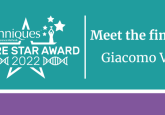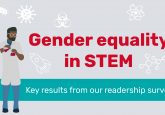Maximize the impact of your research using Plain Language Summaries of Publications

Writing Plain Language Summaries of Publications (PLSPs) to present research in a way that engages a non-specialist audience could lead to interdisciplinary collaborative opportunities and improved health literacy.
The pandemic years have highlighted the value of public trust in science and scientists and has shown that science communication is of huge importance with building and maintaining these relationships. PLSPs are another tool for streamlining the communication between the lab bench and the kitchen table and will expand the reach of research findings, which is especially useful for early-career researchers.
PLSPs summarize a piece of research and are written for non-specialists, avoiding technical language or clearly explaining any essential scientific jargon. Research has found that patients reading PLSPs prefer those with infographics. What’s more, including these visual elements will also help to keep them short and sweet.
Like the recent drive to publish in open-access journals, creating PLSPs will make publicly funded research more accessible and engaging to the members of the public. This easy-to-understand format improves the transparency of academic research, which also increases trust in the results. A recent study found that using PLSPs improved general understanding around vaccine research, which correlated to an increased trust in vaccines. This paper was published in Vaccine, or find the bitesize PLSP of this paper here, and experience their benefits for yourself.
 Leroy Hood: career advice and embracing wellness
Leroy Hood: career advice and embracing wellness
Leroy Hood, the co-founder of the Institute for Systems Biology, shares his advice for staying excited about your career and discusses the challenges facing researchers today.
“The impact of scientific misunderstanding became painfully apparent with the decline in vaccine uptake, so the need for clear, understandable scientific information has never been more vital. Plain language summaries of publication could be an elegant and much needed solution to this problem,” writes Lisa Chamberlain James and Rachel Beeby in the Journal for Clinical Studies.
Non-specialist audiences include policy makers, journalists, and health care professionals, among many others who implement research findings in the wider community. Reaching readers outside of your research field will maximize its impact and could lead to unexpected and interdisciplinary collaborations. PLSPs can also be useful when applying for research funding and will give reviewers any easy-to-understand and quick overview of the relevant research.
Find some top tips for writing PLSPs on Bioanalysis Zone, and find out more about the initiative on www.plainlanguagesummaries.com.





